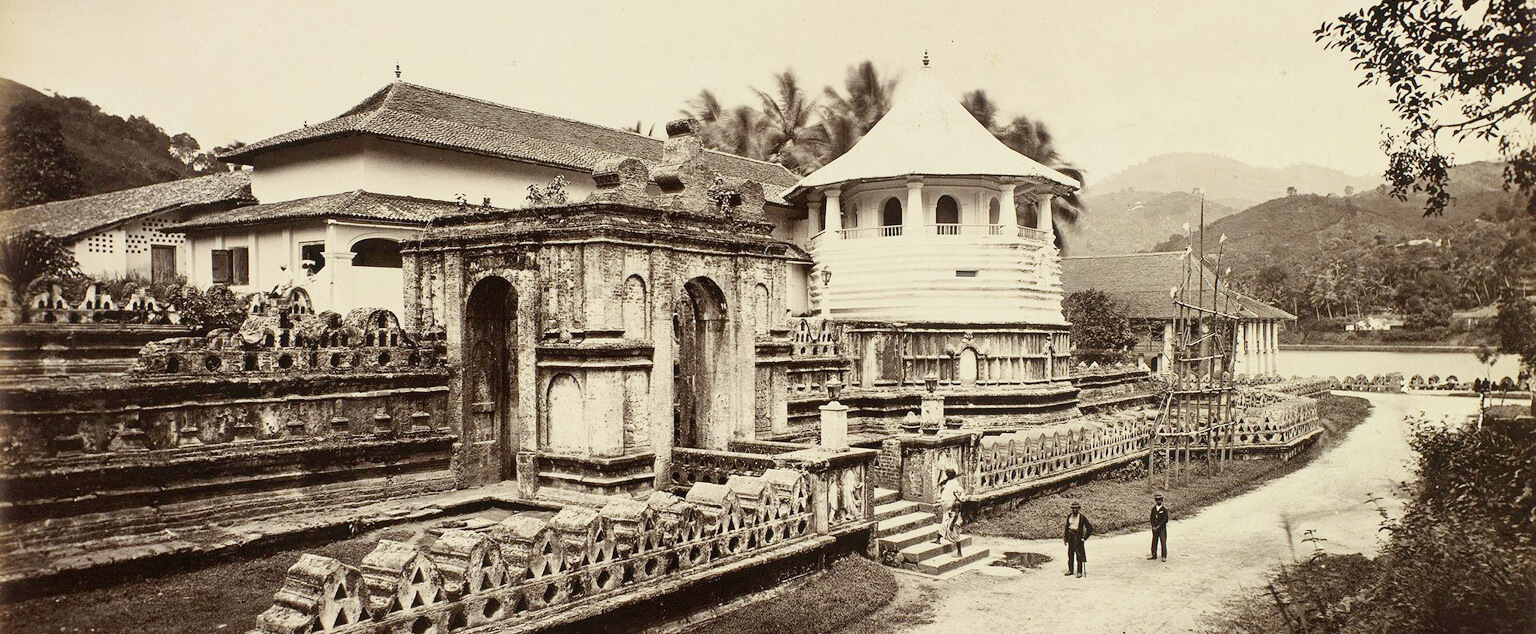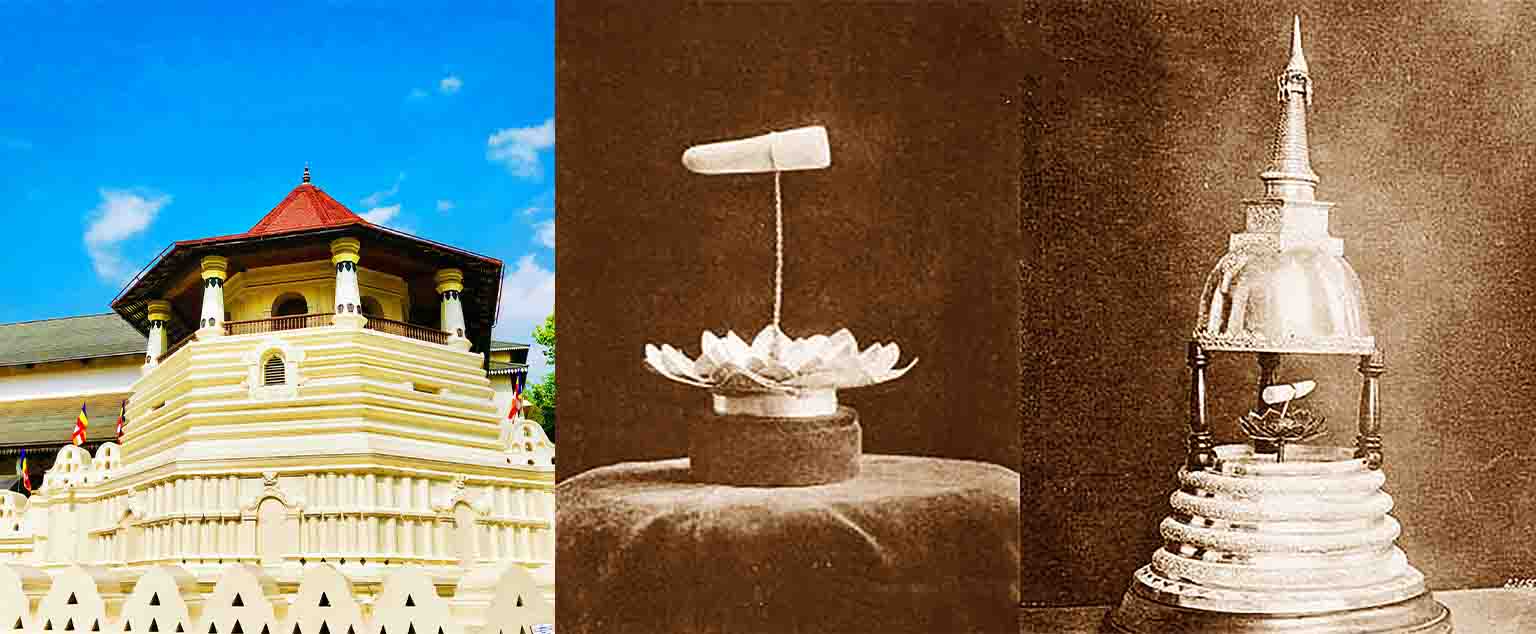The Temple of the Sacred Tooth Relic, also known as Sri Dalada Maligawa, is a world-renowned landmark that houses Gautama Buddha’s left tooth. It was designated a UNESCO World Heritage Site in 1988 and attracts hundreds of local and international visitors on a daily basis. For Buddhists all across the world, the temple is extremely important culturally and religiously.
Architecturally, the temple blends the unique Kandyan style with components from previous temples that housed the Sacred Tooth Relic. It is located in Kandy and borders the ancient Royal Palace to the north, the Udawaththa Kelaya forest reserve to the east, Kandy Lake to the south, and the Natha and Paththini Devalas to the west. The temple’s beautiful carvings are composed of gold, silver, bronze, and ivory.
Kandy is the final burial location of the Sacred Tooth Relic, which Princess Hemamala and Prince Dantha carried to Sri Lanka from Kalinga, India, during King Keerthi Sri Meghavarna’s reign (301-328). The relic became a symbol of Sri Lankan kingship, and it was kept in special shrines within royal palaces in several capitals, including Anuradapura, Polonnaruwa, Dambadeniya, Yapahuwa, Kurunegala, Kotte, and Gampola. The Temple of the Sacred Tooth Relic, located in Kandy, the last kingdom, is still the most revered temple in Buddhism.
The Portuguese destroyed the original Dalada Madura at Kandy, which was built by King Wimaladharmasuriya I (1592–1604). The Dutch blew down the second temple built by King Rajasinghe II (1635-1687). King Wimaladharmasuriya II constructed a three-story Dalada Madura in 1687, but it crumbled with time. His son, King Sri Veera Parakrama Narendrasinghe (1707–1739), built the current two-story temple. The South Indian Kings who ruled from Senkadagala repaired and safeguarded the shrine, which was later enlarged by King Keerthi Sri Rajasinghe.
King Sri Wickrama Rajasinghe (1798-1815) added the Paththirippuwa, often known as the Octagonal Pavilion. Today, the temple is painstakingly maintained, and religious ceremonies are carried out on a continual basis under the supervision of three chief custodians: The Mahanayake Theros of the Malwatta and Asgiriya chapters, as well as the Diyawadana Nilame, the lay custodian.
History of Kandy Esala Perahera
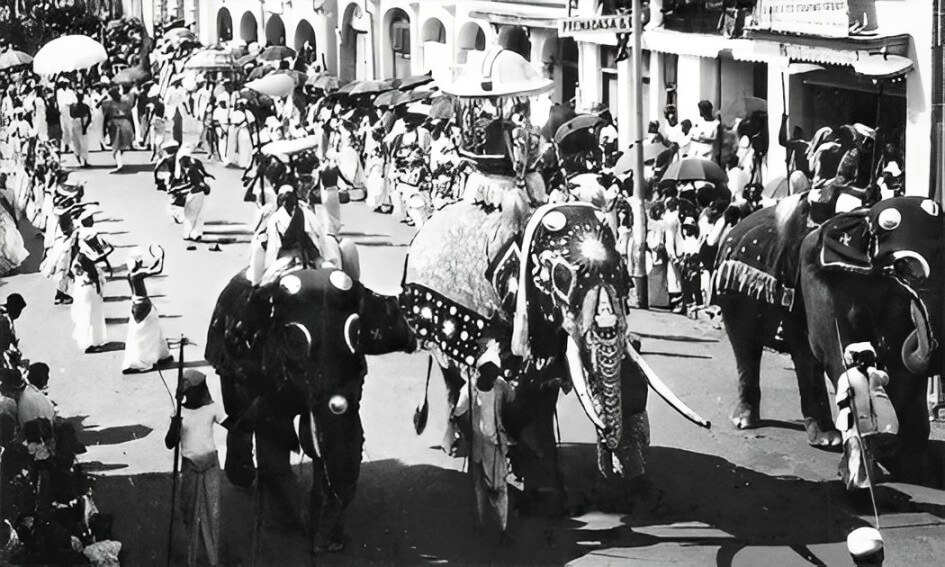
Buddhist literature describes a variety of festivals and celebrations celebrated in great honor of Lord Buddha. The Perahera pageant became famous during the reign of India’s Emperor Asoka. The Kandy Perahera, in particular, highlights traditional rituals, the majority of which incorporate Buddhist and Hindu religious practices.
This festival shows the richness of Sinhala culture. Many of the practices are drawn from the “Dantha Dhathu Charitha” or “Dalada Siritha,” a book produced during the reign of Kurunegala’s Parakramabahu IV (1302-1326) that details the customs associated with the Sacred Tooth Relic.
The “Dalada Siritha” sets out 38 statutes for organizing a Perahera pageant. According to these rules, the Shrine Room of the Sacred Tooth Relic must be cleaned at an auspicious hour and tastefully decked with silk fabrics and canopies. On the seventh day morning, the monarch, his ministers, and the city’s general population should offer rice, flowers, and light oil lamps. That evening, the city should be decorated to resemble Heaven. The chief priests of the Uttara Mula Sect, along with members of the Ganavesi and Kilin castes, should move the Sacred Relic casket with the utmost respect.
These ceremonies were done on an annual basis and are still observed today.
Kumbal Perahera (Kumbal Procession)
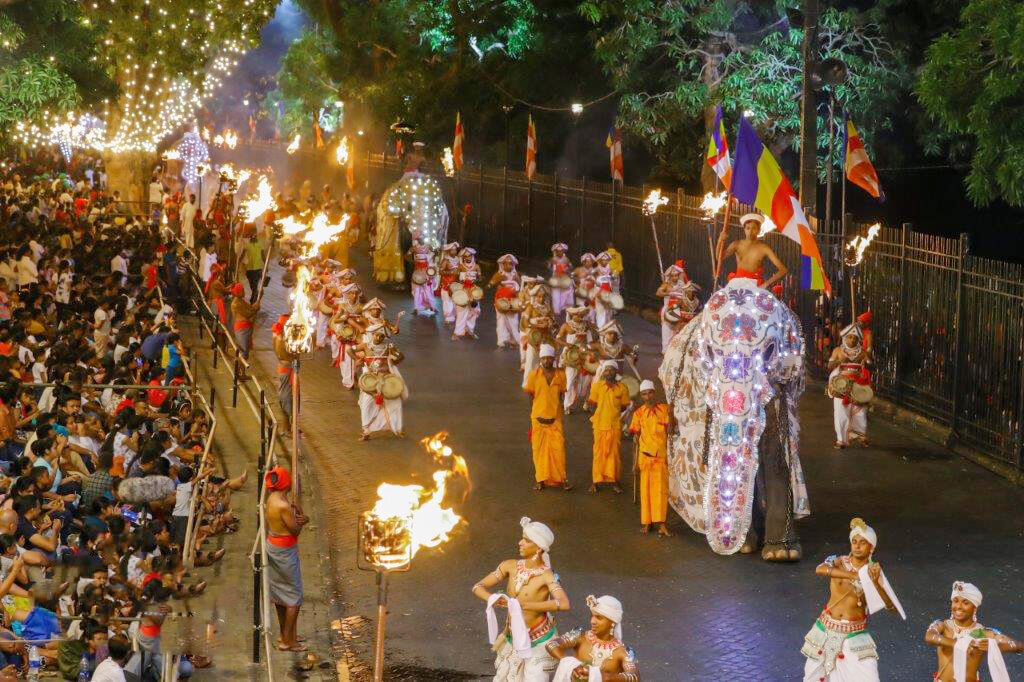
The Kumbal Perahera, which marks the start of the Esala Perahera in Kandy, is a significant parade that includes the Sacred Tooth Relic. Originally given to children to ward against evil spells and ill will, it marches through Kandy’s streets for five days, preserving the city’s cultural and spiritual legacy. Despite its popularity, the Nilames (temple authorities) do not participate, and the drummers and tuskers are not dressed ceremonially.
For the next five nights, the “Devale Peraheras” take place in the four Devales, with each Devale’s priest carrying the pole each evening, accompanied by music, drumming, flag and canopy bearers, spearmen, and the Ran Ayudha (gold weaponry), the gods’ sacred symbol. On the sixth night, the Kumbal Perahera begins and lasts five days. The Devale Peraheras first congregate in front of Sri Lanka’s most prominent Buddhist temple, the Temple of the Tooth, which has housed the Buddha’s Sacred Tooth Relic since the sixteenth century. The insignias are placed on the ransivige (a dome-like structure) and escorted by the Basnayake Nilames (Devales’ lay custodians).
The relic casket, a replica of the Tooth Relic, is placed within the ransivige mounted on the Maligawa Elephant. The Maligawa Perahera then joins the waiting Devale Peraheras to lead the procession. Whip-crackers and fireball acrobats lead the way, followed by Buddhist flag bearers. The Peramuna Rala (Front Official) rides the first elephant, followed by Kandyan drummers and dancers who entertain the audience. They are followed by elephants and various groups of musicians, dancers, and flag bearers. A troupe of white-clad singers announces the coming of the Maligawa Tusker carrying the Sacred Tooth Relic. The Diyawadana Nilame, who typically assures rain during the appropriate season, walks behind the tusker dressed in traditional Kandyan costume.
The second procession begins at the Natha Devale, which faces the Sri Dalada Maligawa and is the oldest structure in Kandy, going back to the 14th century. The third procession begins at the Vishnu Devale (dedicated to the Hindu god Vishnu), also known as the Maha Devale, which is located in front of the main gate of the Natha Devale. The fourth procession begins at the Katharagama Devale, which is devoted to the god Kataragama deviyo and is associated with the warrior god Skanda. It is located on Kottugodalle Vidiya (a Kandy street). This procession includes the Kavadi, a peacock dance in which pilgrims carry semicircular wooden structures decorated with peacock feathers on their shoulders. The fifth and final procession begins at the Pattini Devale, which is devoted to the goddess Pattini, who is believed to cure infectious diseases and is summoned during droughts and famines. This Devale is located to the west of the Natha Devale and is the only procession with female dancers.
The fire of cannonballs, audible across Kandy, signals the beginning of the Devale Peraheras, the placement of the casket on the tusker’s back, the start of the Dalada Perahera, and the end of the Perahera.
Randoli Perahera (Randoli Procession)
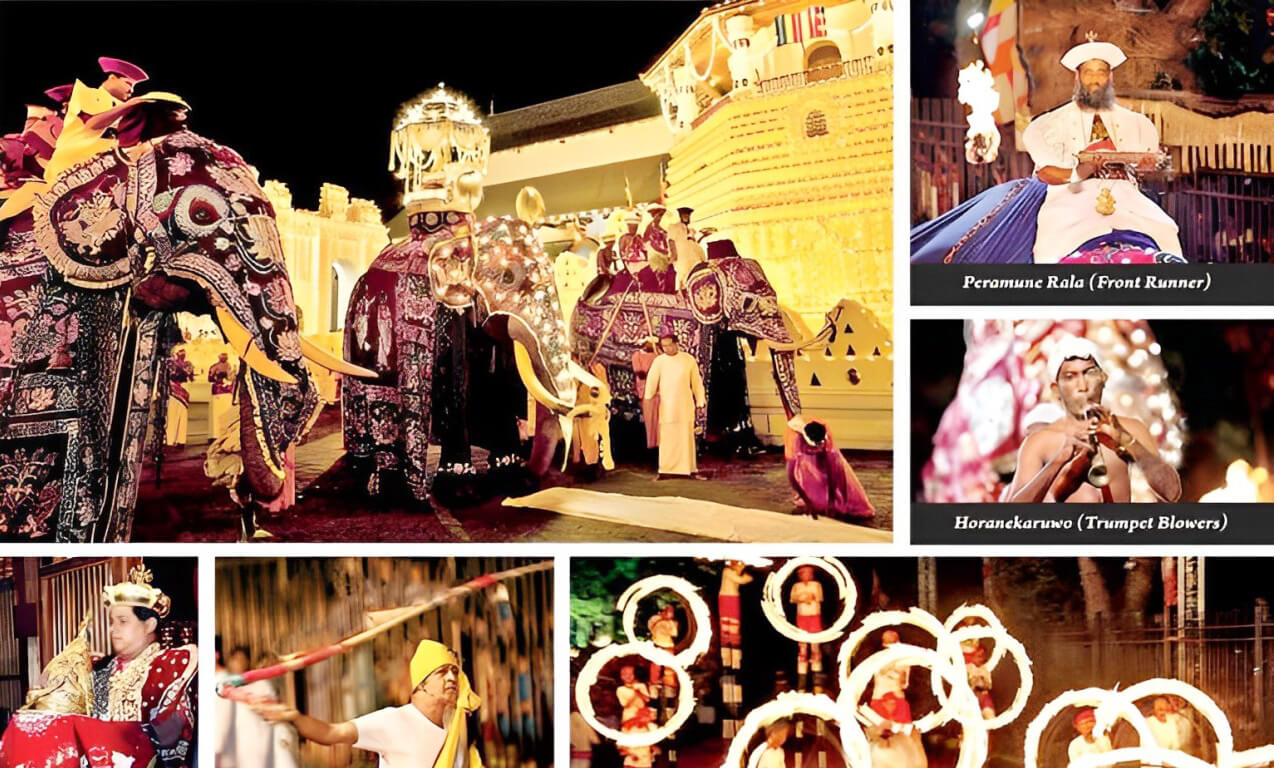
This practice is unique to the procession of the Sacred Tooth Relic, which parades through the streets for five days in a row.
During the reign of the kings, the Chief Queens marched on palanquins. However, their involvement in the procession of the Sacred Tooth Relic was deemed inappropriate, and they were eventually excluded. Nonetheless, a palanquin remains part of the procession to honor the Queen, and it now serves as the parade’s concluding piece.
Each of the four Devales has its own ornate palanquin with holy objects. Despite the changes, the palanquins continue to be held in high regard.
Maha Randoli Perahera (The Grand Randoli Procession)
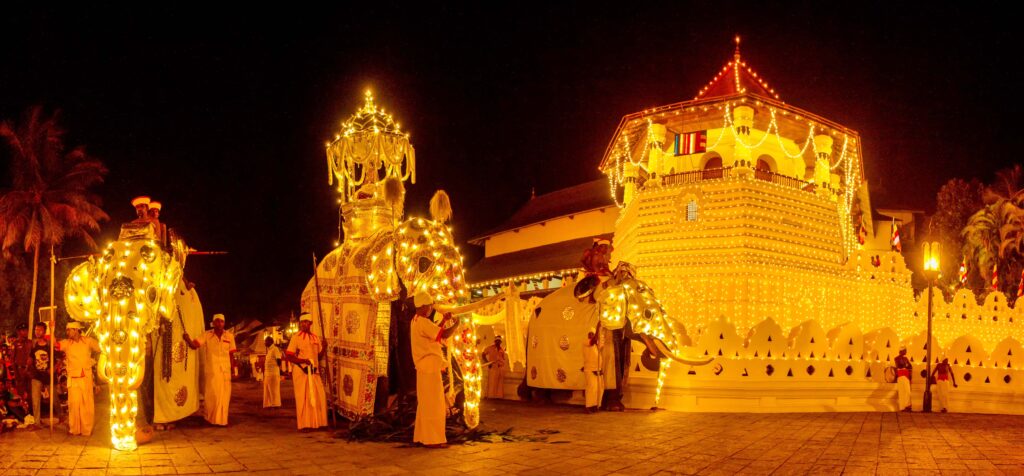
The Maha Randoli Perahera, the grand finale of the Esala Perahera festival in Kandy, Sri Lanka, is a breathtaking display of cultural significance. The last procession of the festival ends in a display of lavish spectacle and religious devotion. The Tuskers, decked with garlands and finely embroidered gold robes, lead the procession in regal style. Drummers clad in ceremonial garb provide rhythmic accompaniment that vibrates across Kandy’s streets. The Diyawadana Nilame, dressed in a specially constructed ceremonial outfit, brings a new level of beauty to the procession, symbolizing the event’s ceremonial splendor and spiritual significance. This spectacular celebration not only honours Sri Lanka’s rich cultural legacy, but also serves as a heartbreaking reminder of the island’s deeply ingrained religious traditions and collective identity.
Diya Kepeema and the Day Perahera
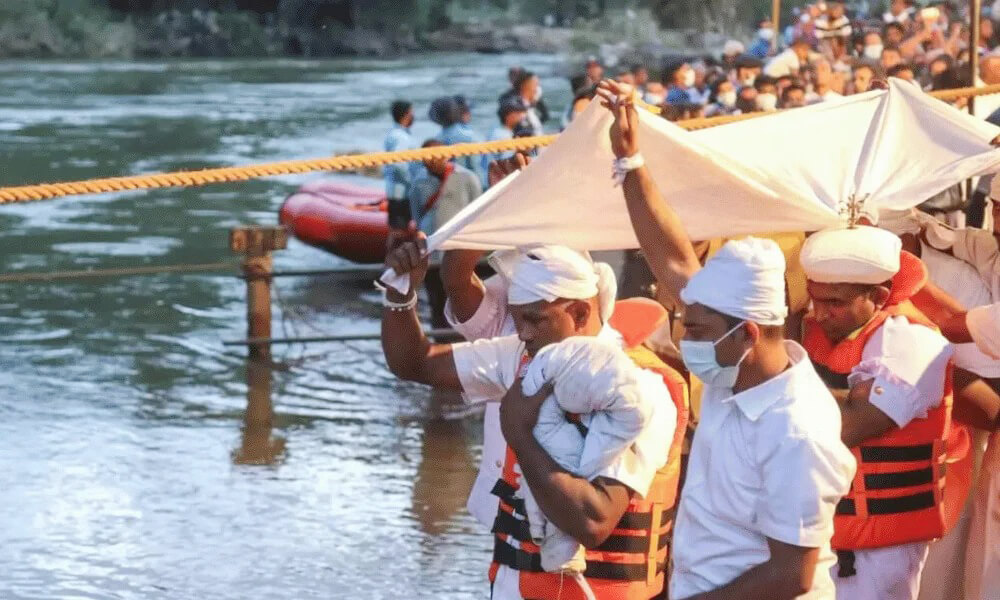
The Esala Perahera celebration culminates in the Diya Kepeema, a symbolic water-cutting ritual held at the Mahaweli River in Getambe, near Kandy, following five more nights of the Randoli Perahera. This ceremony is a key component of the festival’s conclusion, representing purification and blessings for the country and its inhabitants. Following the Diya Kepeema, a Day Perahera is held to remember the ritual. This Day Perahera features a variety of cultural performances, traditional dances, drumming, and a procession honoring the Sacred Tooth Relic. It is the festival’s ultimate celebration of its spiritual and cultural significance, bringing together believers and viewers to experience Sri Lanka’s vivid traditions.
Perahera Sandeshaya
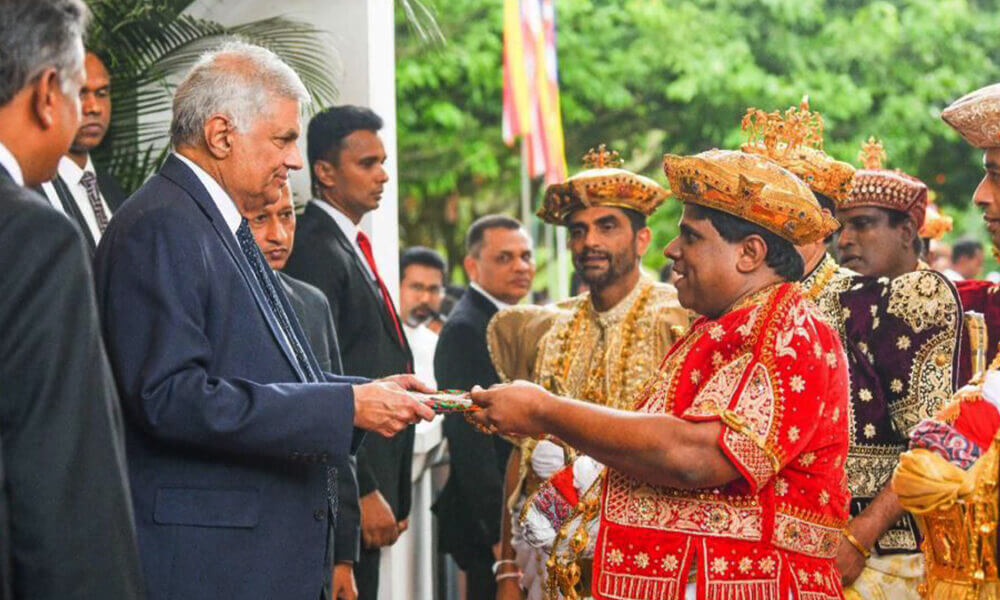
After the Perahera, the Diyawadana Nilame leads a procession of Nilames from the Sathara Maha Devalas and rural devalas to the President’s Pavilion. They carry an official letter known as the Perahera Sandeshaya, which proclaims the successful completion of the yearly Esala Perahera. The President receives and acknowledges the sannasa at the Pavilion’s entrance, bringing the festival to an official close.

